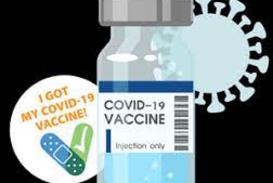Healthcare Medical Pharmaceutical Directory.com
Dialysis Providers - Nephrology Care
Business Trends...
- Dialysis provider giants DaVita and Fresenius control over two-thirds of the dialysis market in the United States
- 2021 sees new innovation and opportunities for home-based dialysis technology to establish itself as the pandemic continues to run its course
- Scroll down to gain insights into the highly specialized and regulated dialysis healthcare industry sector
COVID-19's Threat To Dialysis Treatment In Dialysis Centers And Hospitals Continues In 2021
Due to their overlapping healthcare issues, dialysis patients are particularly vulnerable to further illnesses. The threat of COVID-19 remains a daunting challenge for them in 2021. For those patients undergoing dialysis in hospitals or dialysis centers, there are viable risks regarding COVID-19 that must be accounted for. The Centers For Disease Control (CDC) has compiled guidelines to prevent COVID-19 contamination in healthcare facilities and best practices for patients diagnosed with COVID-19 that are receiving dialysis treatment.
Significant New Dialysis Care Standard and Reimbursement Rules from the Centers for Medicare and Medicare Serices (CMS) effective 1/1/21
During the close of 2020 CMS made pivotal changes and formalized their final rule for their dialysis program's end-stage renal disease (ESRD) prospective payment system, reimbursement for mainstream ESRD and Acute Kidney Injury (AKI) patient care plus important updates to its ESRD Quality Incentive Program (QIP).
Currently, the ESRD QIP employs four types of measure domains that align with CMS’s Meaningful Measures Initiative (MMIP), which identifies the highest priorities for quality measurement and improvement.
- Clinical Care Measures: Drives and measures prevention and treatment of chronic disease and evaluates dialysis facilities based on the quality of care for ESRD patients with emphasis on anemia management, dialysis effectiveness and outcomes, vascular access, infection avoidance and bone mineral metabolism
- Care Coordination Measures: Monitors and promotes collaboration between healthcare provider organizations and facilities to orchestrate communication and coordination of care for ESRD patients
- Safety Measures: Measuring safety improvement in dialysis treatment at point of care
- Patient and Family Engagement Measures: Assessment on the focus of improving individual and family involvment as partners in patient care
CMS is continuing to take action to reinforce pay-for-performance and value-based care (VBM) measures across all of its healthcare programs including dialysis. All changes in reimbursement, care standards and care evaluation made by CMS or other government regulatory agencies and commercial payers are important. ESRD patients frequently host comorbidities that individually and collectively are clinically challenging and costly.
Dialysis and End Stage Renal Disease Market Sector Overview
Based on diabetes, hypertension, obesity and associated comorbidities; the dialysis and end stage renal disease healthcare sector is a costly and clinically challenging healthcare segment.
There are 3 types of dialysis:
- Hemodialysis is the most common
- Peritoneal dialysis (PD) requires surgery to implant a peritoneal dialysis catheter into the patient's abdomen
- Continuous renal replacement therapy (CRRT)
Advances in technology, patient monitoring, medication management and clinical knowledge have increased home hemodialysis dialysis options but most ESRD patients must still be treated within a dialysis center or clinic. It is estimated there are about 6,900 dialysis centers in the United States serving a dialysis patient population of just under 500,000 people.
Due to the array of oral and injectable pharmaceutical therapies, devices ( IV tubing sets, IV containers, syringes, cannulas, catheters, other assorted disposables), pharmacy fixtures, cleaning supplies and equipment (dopplers, diagnostic units, dialysis machines, infusion pumps, refrigerators, water filtration systems, etc.) the dialysis sector relies on numerous drug, medical device, instrumentation and equipment manufacturers as well as distributors, wholesalers and GPOs to source products from. The growing global population of ESRD patients and the high consumption rate of products it entails drives a vibrant and competitive commercial dialysis worldwide marketplace.
The global dialysis market is valued at over $115 billion; the United States is the largest segment of the present market. Rapidly growing dialysis markets are emerging in Australia, Central America, China, India, Mexico, South America, Japan and Singapore due to increases in disposable income which result in diet and lifestyle changes predisposed to creating diabetes, hypertension and obesity issues as well as having growing geriatric populations.
Dialysis Patient Clinical and Financial Profile...
- End Stage Renal Disease impacts roughly 650,000 persons in the United States; chronic kidney disease (CKD) and ESRD is typically managed by nephrologists although endocrinologists are usually part of the sphere of care for dialysis patients due to diabetes as well as internists, cardiologists, family / general practitioners for hypertension, diabetes and other healthcare needs associated with ESRD patients
- There are about 100,000 patients on the kidney transplant list in the U.S. but only about 20,000 kidneys are available annually due to lack of participation in organ transplant programs; this is a serious, ongoing issue for ESRD and other areas of patient care
- Hispanics and Native Americans are 1.5 times more likely to have ESRD, African Americans are 3.5 times more likely to have ESRD
- The number of persons diagnosed with ESRD increases about 5% annually; it correlates directly to higher incidences of diabetes and associated healthcare issues of hypertension and obesity
- Annual dialysis treatment cost (through an outpatient dialysis clinic or dialysis center) for one patient is $90,000
- Cost of dialysis annually in the U.S. is $42 billion; $34 billion covered by Medicaid, the remainder by commercial insurance or other means
Due to the multiple healthcare issues dialysis patients possess they are on a host of medications to control blood pressure ( hypertension ), blood sugar and insulin levels ( diabetes ) and other care needs that require pharmaceutical therapy. There is a standard grouping of medications that specifically align with the dialysis process and corresponding care. Any challenges with product availability can create a spike in costs and require changes to a dialysis patient's medication therapy to accommodate the variance between products they are normally on and the ones they have been changed over to. Based on the typical fragile characteristics of dialysis patients, there is a high degree of caution involved when their medications have to substituted as interchangeability of therapies is not transparent and significant side effects can emerge.
Standard Pharmaceutical Therapies Administered Within The Dialysis Care Space ( Including Freestanding Clinics And Hospitals) are:
Erythropoietin
Most patients with ESRD who are on dialysis have anemia which means they have a low red blood cell count. Kidneys make and secrete the hormone erythropoietin; erythropoietin is the hormone responsible for keeping a normal red blood cell count and the kidneys are responsible for making and secreting this hormone. Patients with renal failure on hemodialysis will get erythropoietin during each treatment by intravenous injection into the return dialysis tubing. Most peritoneal dialysis ( PD ) patients will get erythropoietin by injection directly under the skin. In healthy individuals, red blood cells make up about 36-44 percent of the blood. Before erythropoietin was available, most dialysis patients had a red blood cell count of only 20-26 percent.
For years Amgen's Epogen product dominated the erythropoietin dialysis market sector. Biosimilars and newer erythropoieten therapies from other manufacturers have emerged including those from Biocon, Hoffman-LaRoche, Johnson & Johnson, Novartis, Pfizer ( Hospira ), Ranbaxy and Teva.
Iron
In order for erythropoietin to work well, iron needs to be present to make red blood cells. Without iron fewer red blood cells are made, and are smaller in size, From smaller red blood cells another issue presents itself as they are not able to carry as much oxygen. Small amounts of red blood cells and iron with iron are depleted during the hemodialysis. Due to a reduction of iron, red blood cells and erythropoietin, these vital elements must be replaced.
Dialysis centers usually administer iron intravenously ( iron sucrose or ferric gluconate) during hemodialysis; quantities are determined by routine blood tests. Iron can also be administered orally but frequently this triggers gastrointestinal issues including pain, cramping and constipation especially if high doses are required. For these reasons, iron supplementation must often take place via intravenous routes of administration.
Antibiotics
Due to their weakened condition ESRD patients are more vulnerable to infection and this is compounded by the ongoing use of catheters, IV drug administration and other contributing issues. Antibiotic selection and administration is quite complicated as ESRD patients have altered pharmacokinetics (absorption, distribution, metabolism and elimination) and at increased risk of side effects. While vancomycin is a primary go-to antibiotic for infections associated with hemodialysis patients, others including aminoglycosides, b-lactam antibiotics, carbapenems, cephalosporins, fluoroquinolones, lipoglycopeptides, lipopeptides, oxazolidinones, penicillins and others are potential candidates depending upon the pathogens involved, the spectrum of the prescribed antibiotic and the patient's ability to clinically tolerate the therapy.
IV Solutions
Various solutions are administered in the dialysis process combining these and other elements including calcium, chloride, magnesium, potassium and sodium. The top three manufacturers of IV solutions on a global basis are B. Braun, Baxter and ICU Medical. Dialysis consumes substantial quantities of IV solutions and despite having three large manufacturers producing IV solutions, significant shortages have occurred. Low inventories and lengthy backorder periods for dialysis centers are common. Fresenius, a global leader in dialysis clinic ownership / management as well as a leading manufacturer of dialysis machines ( it is estimated 50% of the dialysis machines used are produced by Fresenius ) has been developing its own capabilities to produce IV solutions to resolve their access and supply issues regarding IV solutions.
Additional products associated with dialysis patients
As the hemodialysis process may require other medications during its administration ( such as heparin, an injectable anticoagulant that reduces blood clots ) it impacts other elements as well within the dialysis patient's biosystem. Oral phosphate binders ( to prevent excess phosphate serum ) and supplements such as B-complex, Vitamin D, Vitamin E and folic acid are frequently taken by dialysis patients as directed by their nephrologists to either reduce the incidence of dialysis-caused side effects or to enhance the actual hemodialysis process. This is in addition to any other maintenance therapies ( diabetes, hypertension, etc.) they may also be prescribed by their primary care physician. When combined with the products necessary to be administered with the dialysis process, it is clear how costs are high and clinical care challenges are multiplied with ESRD patients.
Leaders in Dialysis Center Ownership and Management: DaVita and Fresenius
DaVita, headquartered in Denver, Colorado, is a top contender in dialysis clinics and has attempted to reach into the broader patient care market beyond dialysis after its acquisition of Renal Ventures Management. They purchased the Everett Clinic, a 500-physician independent practice located north of Seattle in 2016. It operates 20 care sites serving over 315,000 patients. Everett clinic facilities feature physician offices, urgent-care centers, hearing & vision centers, lab services, imaging, behavioral healthcare and cancer treatment. They sold it to United Healthcare/Optum for $5.4 billion in 2018. DaVita continues to operate and expand HealthCare Partners, a business unit which operates multi-specialty medical groups and affiliated physician networks, it serves over 800,000 patients in Arizona, California, Nevada, New Mexico, Florida and Colorado.
Fresenius, based in Bad Homburg, Germany, is the other dialysis sector leader. Like DaVita, Fresenius owns thousands of dialysis clinics but also operates dialysis centers within hospitals. Fresenius is also an established leader in the manufacturing of hemodialysis machines and other equipment plus has entered the IV solution business.
Overall, DaVita and Fresenius clearly dominate the dialysis healthcare provider market in the United States with well over 80% of the market shared between them.
Biosimilars
Recently introduced biosimilars centered on the erythropoeitin and related therapies will not deliver immediate cost relief to the dialysis sector; they are not inexpensive to produce. Clinicians will not immediately seek to convert patients from their existing therapeutic regimens until biosimilars can demonstrate parallel clinical performance and safety in the widespread market -and deliver meaningful price advantages. They will be much more likely to maintain patients on their present regimens for as long as possible to avoid the issues associated with interchanging medications used with dialysis patients. New patient starts for biosimilar products are a more amenable way for nephrologists to utilize the available biosimilar alternatives.
Moving Forward
The global dialysis market, while expanding, remains highly competitive with all competing stakeholders driving to gain market share and sales. Rapid advancements in technology, government policy and regulation changes plus competitive pricing / market access strategies are integral to the dialysis commercial landscape. Other primary considerations include:
- High initial investment, implementation, maintenance costs of entering new and existing dialysis markets
- Competitive pricing pressures across specific individual nations, regions, large and small accounts
- Protection of proprietary clinical and technology innovation; fortification of competitive immunity
- Well-entrenched pharmaceutical, medical device and equipment manufacturer competitors with solid formulary positioning, binding supplier GPO contracts and tight market access channels
... This Dialysis market sector profile includes business, clinical and market access strategy details; scroll down for a list of the largest Dialysis center providers ...
... Dialysis is a highly focused, heavily regulated and cost-sensitive market. Widespread diabetes and hypertension are primary root sources of ESRD. The commercial dialysis care sector has gone though extensive consolidation in the United States and has less than 10 sizable multi-site providers. Healthcare marketers within the dialysis product and service sector must account for this in their brand, product and market access strategy...
...Product / service value propositions must strongly convey clinical and cost performance attributes. As the two largest providers (DaVita and Fresenius) control over 80% of the U.S. market and large portions in other nations, they are pivotal customer accounts to engage in planning market access; the resources below offers strategic insights ....
... The predominant Dialysis center providers listed alphabetically ...
... Professional Associations and Government Agencies Dedicated To Kidney Disease Disorders and Dialysis ...
...A healthcare industry business intelligence resource with marketing strategy insights for pharmaceutical and medical device manufacturers, healthcare provider organizations, medical software and technology enterprises, patient care service companies and management consulting firms spanning a global community of users from 50+ nations...


